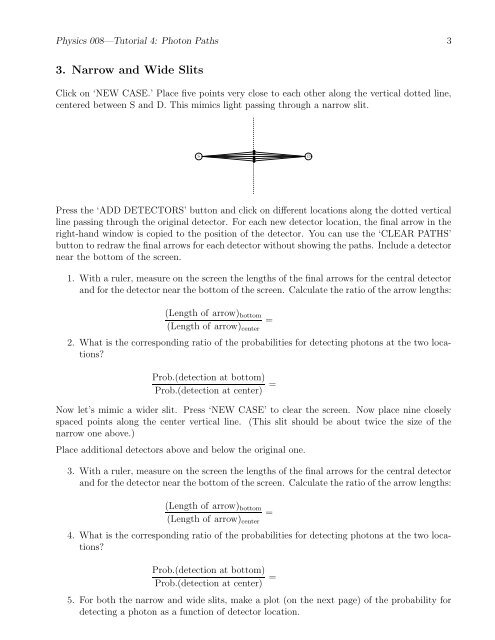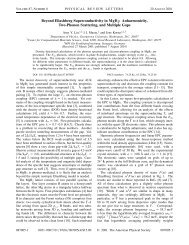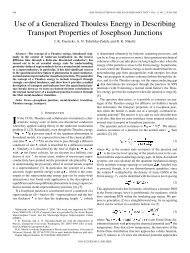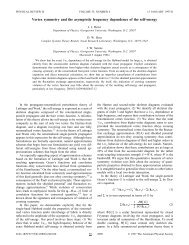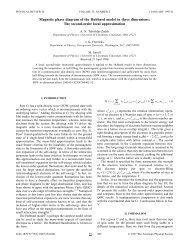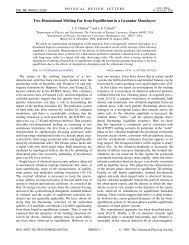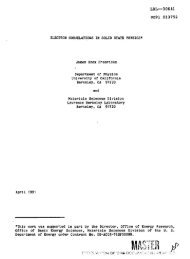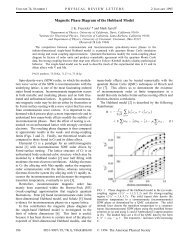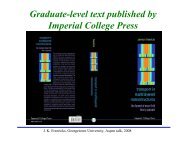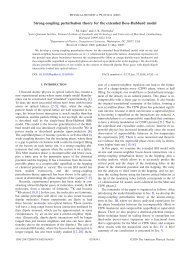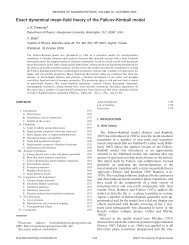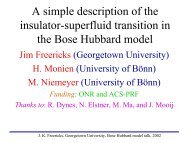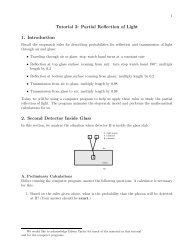Tutorial 4: Photon Paths 1. Introduction 2. Straight-line ... - Physics
Tutorial 4: Photon Paths 1. Introduction 2. Straight-line ... - Physics
Tutorial 4: Photon Paths 1. Introduction 2. Straight-line ... - Physics
You also want an ePaper? Increase the reach of your titles
YUMPU automatically turns print PDFs into web optimized ePapers that Google loves.
<strong>Physics</strong> 008—<strong>Tutorial</strong> 4: <strong>Photon</strong> <strong>Paths</strong> 3<br />
3. Narrow and Wide Slits<br />
Click on ‘NEW CASE.’ Place five points very close to each other along the vertical dotted <strong>line</strong>,<br />
centered between S and D. This mimics light passing through a narrow slit.<br />
S<br />
D<br />
Press the ‘ADD DETECTORS’ button and click on different locations along the dotted vertical<br />
<strong>line</strong> passing through the original detector. For each new detector location, the final arrow in the<br />
right-hand window is copied to the position of the detector. You can use the ‘CLEAR PATHS’<br />
button to redraw the final arrows for each detector without showing the paths. Include a detector<br />
near the bottom of the screen.<br />
<strong>1.</strong> With a ruler, measure on the screen the lengths of the final arrows for the central detector<br />
and for the detector near the bottom of the screen. Calculate the ratio of the arrow lengths:<br />
(Length of arrow) bottom<br />
(Length of arrow) center<br />
=<br />
<strong>2.</strong> What is the corresponding ratio of the probabilities for detecting photons at the two locations?<br />
Prob.(detection at bottom)<br />
Prob.(detection at center) =<br />
Now let’s mimic a wider slit. Press ‘NEW CASE’ to clear the screen. Now place nine closely<br />
spaced points along the center vertical <strong>line</strong>. (This slit should be about twice the size of the<br />
narrow one above.)<br />
Place additional detectors above and below the original one.<br />
3. With a ruler, measure on the screen the lengths of the final arrows for the central detector<br />
and for the detector near the bottom of the screen. Calculate the ratio of the arrow lengths:<br />
(Length of arrow) bottom<br />
(Length of arrow) center<br />
=<br />
4. What is the corresponding ratio of the probabilities for detecting photons at the two locations?<br />
Prob.(detection at bottom)<br />
Prob.(detection at center) =<br />
5. For both the narrow and wide slits, make a plot (on the next page) of the probability for<br />
detecting a photon as a function of detector location.


